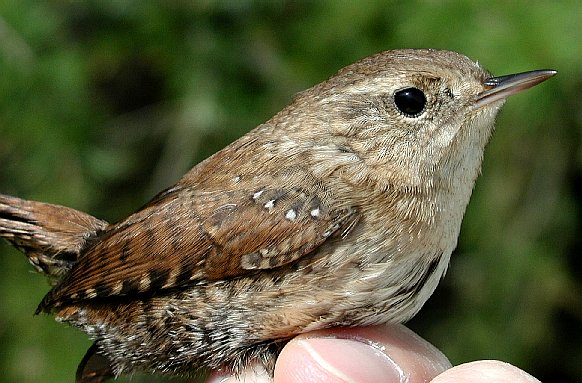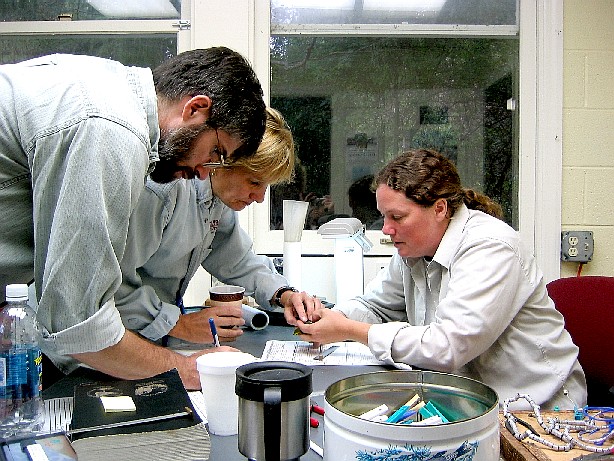
From left to right: Bob Mulvihill, Sue Finnegan, and Cindy Cartwright processing a bird at the Powdermill banding lab
 |
From left to right: Bob Mulvihill, Sue Finnegan, and Cindy Cartwright processing a bird at the Powdermill banding lab |
| At right--examining the wing plumage of a Magnolia Warbler for possible
wing molt limits. MAWAs, like most wood warblers, have a partial
first prebasic molt which typically replaces their juvenal body plumage
and the juvenal lesser, median, and greater wing coverts, carpal covert,
and, more often than not, the small, proximal feather of the alula (the
so-called "alula covert"). The exact number of feathers replaced
during the partial first prebasic molt, of course, varies among species,
and, to a lesser extent, among individuals.
The molt limit, or the discernable boundary between any molted first basic feathers and adjacent retained juvenal feathers, is what banders look for to identify a bird as being a hatching year (before January 1) or second year (after January 1) bird. Importantly, skull condition is very useful and reliable as an ageing criterion in fall and should be used by banders on a regular basis, as a double-check against age determinations made based on other criteria. In the spring, however, when the skulls of most immature (SY) birds are fully pneumatized, molt limits become the principal ageing criterion. Learning to recognize molt limits in the fall, when the correct age of a bird can be confirmed by skull condition, is a very useful exercise for recognizing molt limits in the following spring, when skull condition ordinarily cannot be used to distinguish the age classes. |
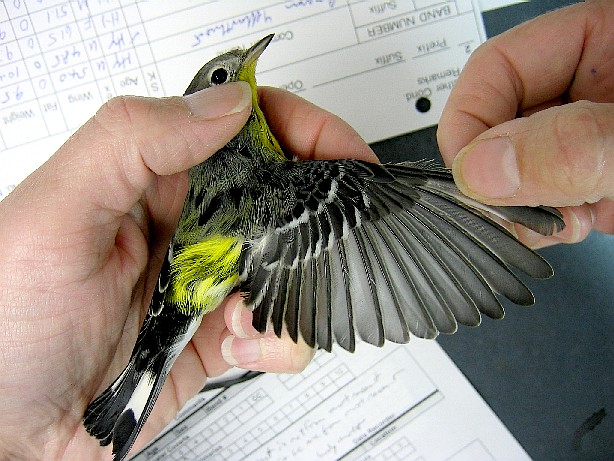 |
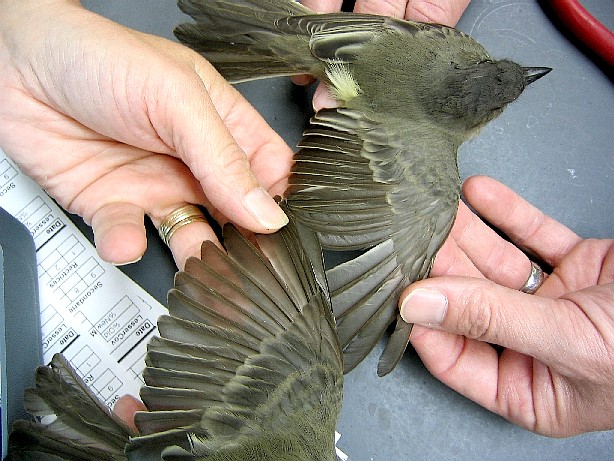 |
Comparing different wing molt limits on two hatching year Eastern Phoebes at Powdermill. The upper bird has two retained juvenal outer greater coverts, while the bird below has molted all of its greater coverts, as well as the carpal and alula coverts. |
From left to right: Sue Finnegan, Cindy Cartwright, Tom Greg, David Norman, and Mike Lanzone discuss the ageing criteria for Ovenbird, at the same time making a side-by-side comparison of an HY and an AHY bird. |
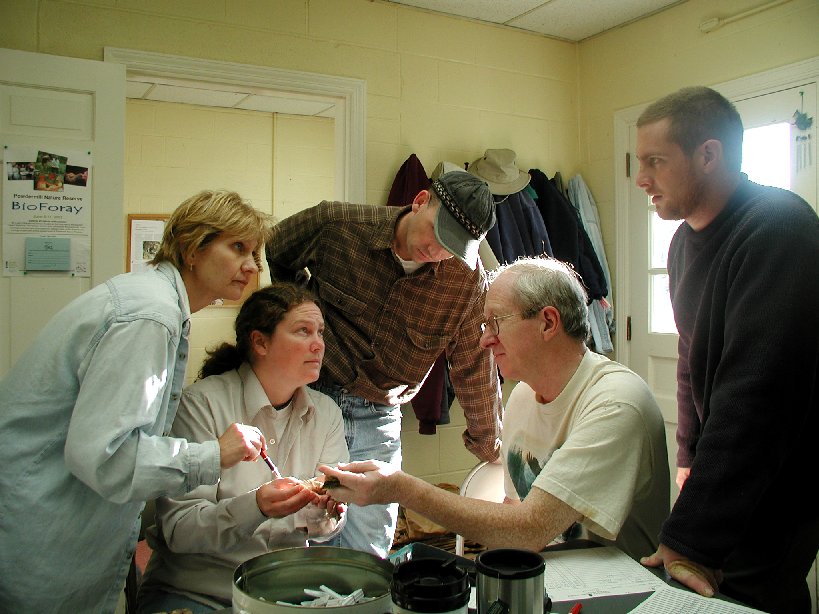 |
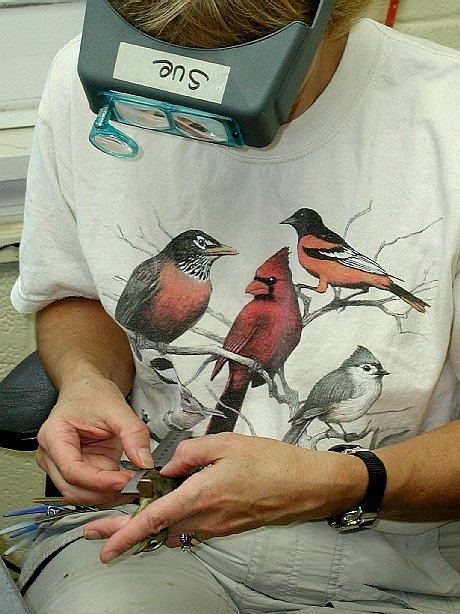 |
Sue Finnegan measures the wing length of a female Black-throated Blue Warbler. Throughout the workshop, banders compared measurements for many birds and made small adjustments to their techniques, with the result that agreement among the banding crew increased substantially by the end of the week. Such close agreement among banders benefits studies of geographic variation in size (as measured by wing length) across broad geographic areas. Analyzed carefully (i.e., restricting comparisons to samples of same age/sex birds), such well-calibrated measurements among banders working at widespread sites can provide evidence of the migratory routes and wintering areas used by different populations of birds. |
Ontario bander, Cindy Cartwright, enjoys the experience of handling a "rare" (up there!) Eastern Tufted Titmouse. |
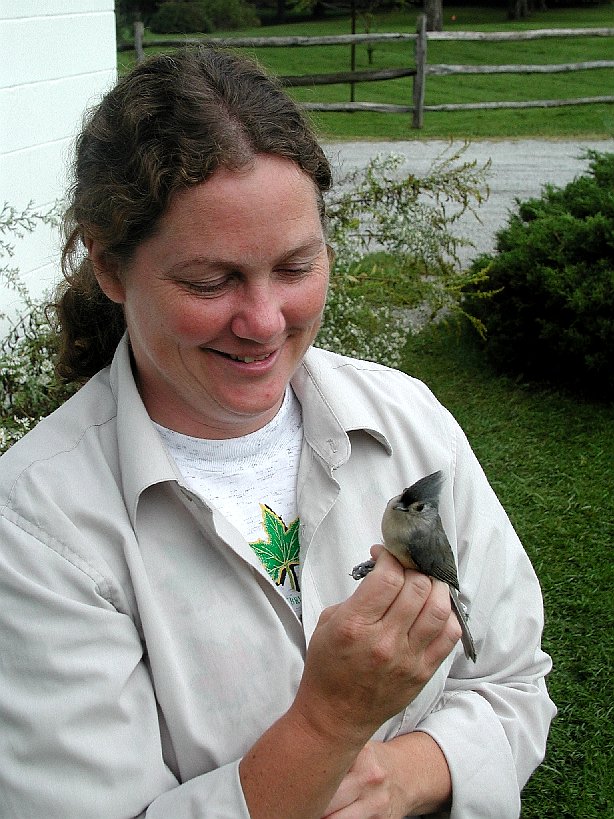 |
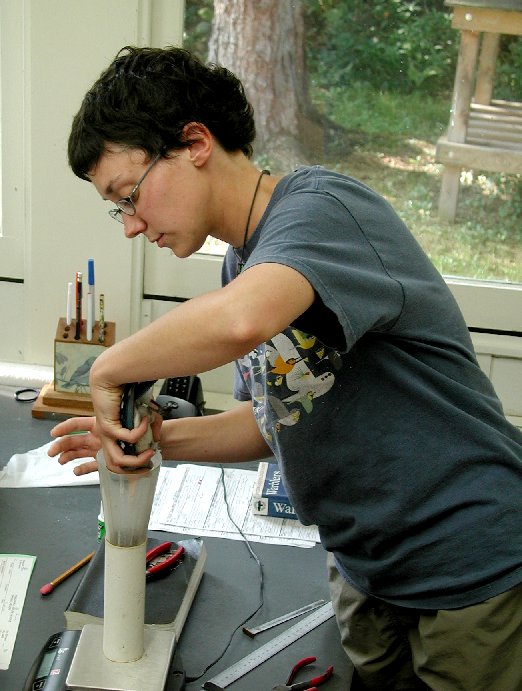 |
Danielle Skoncey puts a Blue Jay into the weighing cone at Powdermill. Danielle received extensive banding experience under Mr. Jul Wojnowski at Lesser Slave Lake Bird Observatory in Alberta, Canada shortly before attending the Powdermill workshop. |
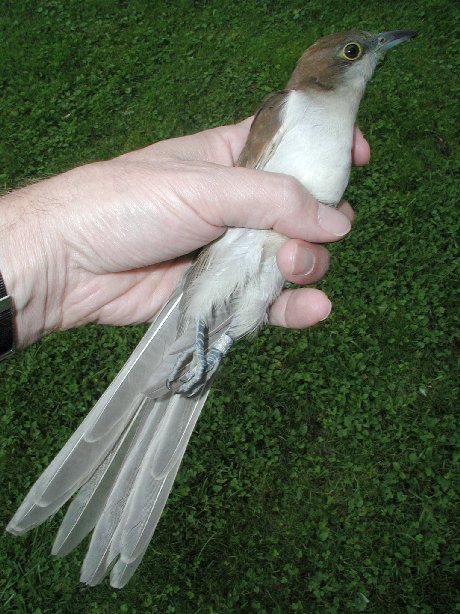
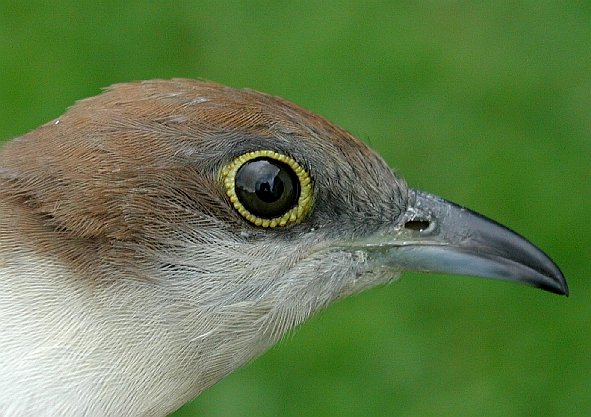
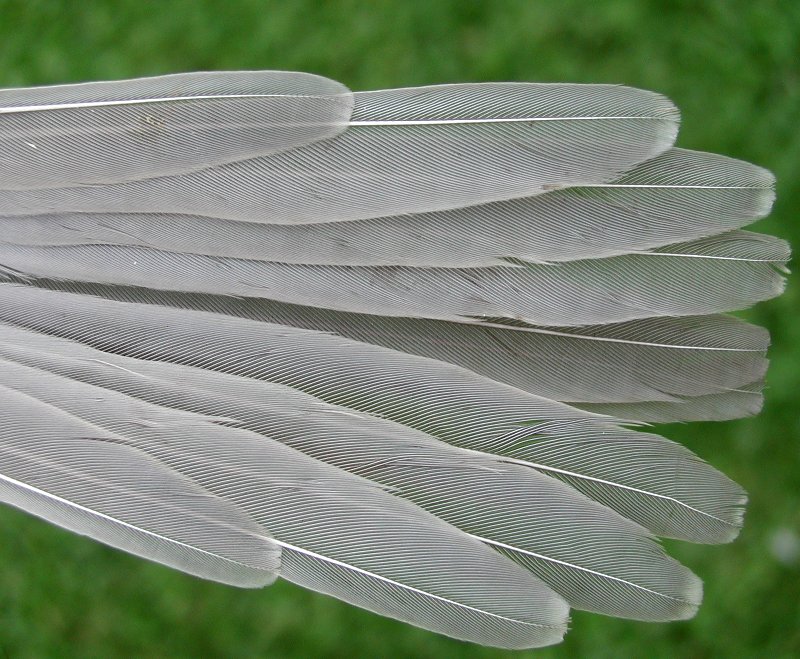
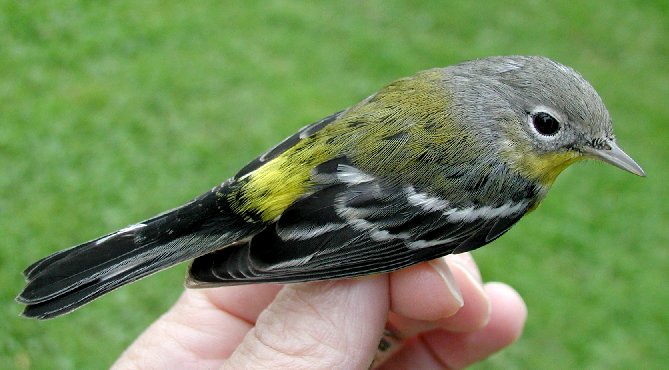
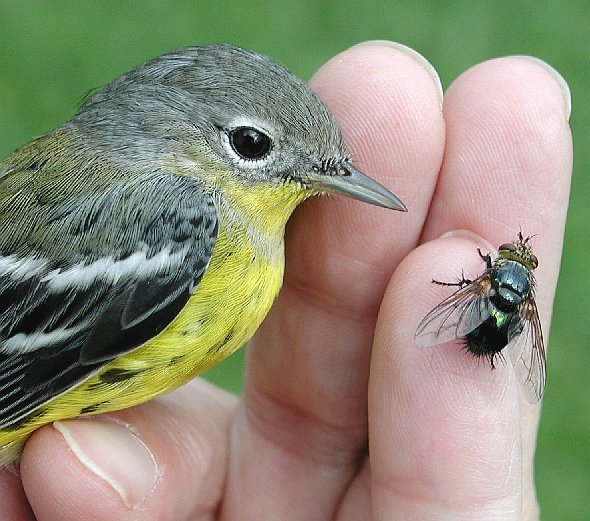
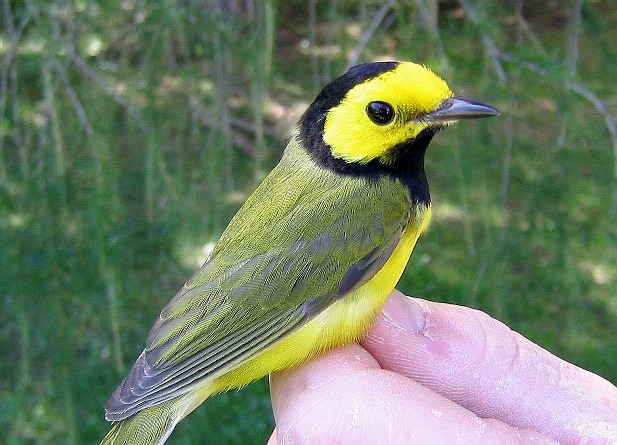
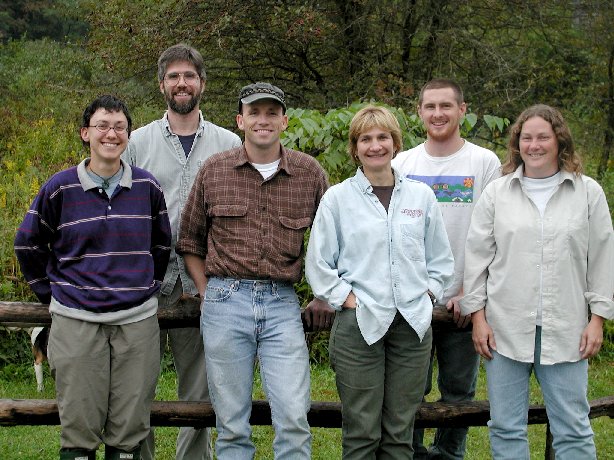 .
.
